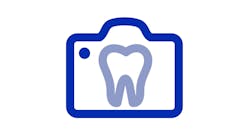The strategic concept of physician enterprise aims to improve both the delivery of services and the economics of medicine, while maintaining a focus on patient needs and outcomes. This progressive and promising approach has not gained adequate traction in the dental community. This article will discuss essential elements of this concept and analyze its potential clinical and economic benefits.
Why we avoid the term “dental enterprise”
According to Edwards and Tsia, a physician enterprise is defined as “any group of physicians and advanced practice providers (APPs) requiring active management for a defined purpose, whether single specialty or multispecialty, faculty or community, networked or employed, in ambulatory or hospital-based settings.”1
Medical and dental practices are complicated, costly, and challenging to run. They must contend with a volatile and cutthroat industry and growing competitive risks. Only an established, high-performing enterprise can successfully traverse this climate.
While the physician enterprise concept has gained traction in the health-care industry, the term “dental enterprise” is not as commonly used. Regardless, similar principles of integration, collaboration, and patient-centered care can also be applied to dentistry.
The term “physician enterprise” usually describes a business model wherein doctors, including specialists, join forces to form a single organization. In dentistry, such arrangements are called group practices. Why is addressing dental group practices “enterprises” offensive to some? There are several possible reasons.
Different professional culture: Dental practices, particularly those in general dentistry, are smaller in scale than many medical practices. Additionally, dentists may have a different history of collaboration or integration than MDs, leading to more prominent professional segmentation.
Historical separation: Dental care has been somewhat separate from medicine in terms of the nature of the practice and regulations. Such independence may have contributed to a slower adoption of the term “dental enterprise.”
Economic autonomy: Solo and group dental practices have traditionally been more economically self-sufficient, leading to different views of concepts such as economies of scale or integrated care.
Regulatory differences: The regulatory environment for dental care certainly differs from that of medical care. Limitations of public advertisement certainly influence the terminology used within the dental industry.
Despite the differences, there is growing recognition of the need for collaboration and integration in dental care, especially as the health-care landscape continues to evolve. Concepts similar to those in physician enterprises, such as group practices, dental service organizations (DSOs), and collaborative care models,2 are also emerging in dentistry. As the industry evolves, the term “dental enterprise” or similar concepts may become more widely used to describe these integrated approaches to care.
Why the concept of dental enterprise is appropriate
“Professional enterprise” typically refers to a business model where stakeholders come together to form a unified entity to deliver services. Enterprises can vary widely in size and scope. Several factors measure an enterprise’s success.
Financial performance: This is often the most immediate and tangible measure. Factors such as revenue growth, profitability, return on investment, and cash flow are commonly used, especially in valuation.
Customer satisfaction and retention: Happy and loyal customers are essential for sustained success. The value of a dental enterprise is directly proportionate to the number of active patients.
Innovation and adaptability: Successful enterprises innovate to stay ahead and adapt to changing conditions. This could involve developing new products/services, adopting new technologies, or entering new markets.
Employee satisfaction and engagement: A motivated and engaged workforce is crucial for success. Employee satisfaction, retention, productivity, and talent development contribute to organizational performance.
Brand reputation: A strong and positive reputation can enhance customer trust, attract new business, and provide competitive advantage. Enterprises invest in building and protecting their image through marketing, public relations, and corporate social responsibility efforts.
Compliance and risk management: Enterprises must comply with legal and regulatory requirements and effectively manage risks to avoid legal issues, financial losses, or damage to reputation.
Sustainability and social responsibility: Increasingly, enterprises are evaluated based on their environmental sustainability practices and commitment to social responsibility.
Strategic partnerships and alliances: Collaborations with other organizations can provide access to resources, expertise, and new markets. Successful enterprises build strategic partnerships and alliances that create mutual value and support long-term growth.
Critical steps to unlocking dental enterprise value
Here are some key aspects typically associated with the physician enterprise model that can be used as a playbook for many solo and group dental practitioners.
Integration of services: A common goal of physician enterprises is to combine different services under one roof (e.g, primary care, specialized care, diagnostics, imaging, outpatient surgery, pharmacy, physical therapy).
Improved coordination of care: Physician enterprises aim to enhance coordination and collaboration by bringing disparate disciplines together. This may result in better patient outcomes and experiences.
Patient-centered approach: Physician enterprises frequently aim to provide more patient-centered care. This could entail more individualized treatment regimens, longer appointment hours, and improved access.
Economies of scale: Physician enterprises can obtain economies of scale by combining infrastructure and resources, which lowers the cost of equipment, administration, and negotiation with insurance.
Tech integration: Physician enterprises are frequently known for their embrace of technology (e.g., telemedicine, data analytics, EHRs, remote monitoring).
Business structure: Physician enterprises might be organized as partnerships, group practices, or joint ventures with health-care systems or hospitals. The particular arrangement is determined by several variables, including participating physicians’ objectives, financial constraints, and regulatory restrictions.3
How to apply these principles in dentistry
Incorporating physician enterprise principles into the overall strategic and operational systems of dental practice is a sure way to achieve economic success. This means reevaluating and realigning historically segmented components within and outside the practice to facilitate cooperation within patient-centered care and assure a care continuum.
Multispecialty dental care facilities undoubtedly embody the notion of physician enterprise. Moreover, adopting these strategies is a way of exploring an unexplored avenue of value that can no longer be ignored. The most important point here is that adapting these principles will substantially increase the value of dental enterprise-perhaps the most important and valuable asset any dentist has.
References
- Edwards T, Tsia M. The 10 essential capabilities for an optimized physician enterprise that drives value. Chartis. 2024. https://www.chartis.com/insights/10-essential-capabilities-optimized-physician-enterprise-drives-value
- Machta RM, Reschovsky JD, Jones DJ, et al. Health system integration with physician specialties varies across markets and system types. Health Serv Res. 2020;55(S3):1062-1072. doi:10.1111/1475-6773.13584
- Maddoux L. Four critical steps to unlocking physician enterprise value. LinkedIn. April 26, 2022. https://www.linkedin.com/pulse/four-critical-steps-unlocking-physician-enterprise-value-maddoux/









